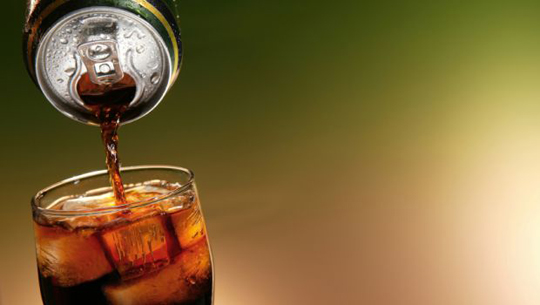Mar 1: Talk about beverages for get-togethers and parties, and you will find a whole line of colas and sodas being lined up to add to the cheer. And it doesn't just stop there. In most urban households, the refrigerator is commonly stocked with aerated drinks, which the children sip on daily as means of break-time refreshment. There have been numerous studies done bringing to light the shocking health hazards of consuming aerated drinks on a regular basis. Some claim they contain pesticides, they are toxic enough to dissolve a human tooth within hours, they can cause diabetes and other diseases because of high amounts of added sugar, so on and so forth. Rather than being encouraged to consume fresh fruit juices, which require certain amount of effort to prepare, colas seems to be the easy and best option.

According to a new research done by University of California, teenagers who consume a diet low in vegetables and high in sugar-sweetened and diet soft drinks may be at increased risk for premenopausal breast cancer.
The researchers found that women who consumed a diet as adolescents or young adults associated with chronic inflammation had a higher risk for premenopausal breast cancer compared to those whose adolescent and early adulthood diet was not associated with chronic inflammation. The findings were published in the journal Cancer Epidemiology, Biomarkers & Prevention.
"Our results suggest that a habitual diet that promotes chronic inflammation when consumed during adolescence or early adulthood may indeed increase the risk of breast cancer in younger women before menopause," said Karin Michels, Professor at University of California, Los Angeles Fielding School of Public Health.
"A diet low in vegetables and high in sugar-sweetened and diet soft drinks, refined sugars and carbohydrates, red and processed meats, and margarine has been linked to high levels of inflammatory markers in the blood," said Michels.
"Because breast cancer takes many years to arise, we were curious whether such a diet during the early phases of a woman's life is a risk factor for breast cancer," she said.
The Study
For this study, Michels and colleagues used data from 45,204 women enrolled in the Nurses' Health Study II who had completed a food frequency questionnaire in 1998, when they were between ages 33-52, about their diet during high school. Adult diet was assessed first using a food frequency questionnaire in 1991, when participants were ages 27-44, and then every four years after that. Each woman's diet was given an inflammatory score using a method previously developed that links diet with inflammatory markers in the blood.
During 22 years of follow-up, 870 of the women who completed the high school food frequency questionnaire were diagnosed with premenopausal breast cancer and 490 were diagnosed with postmenopausal breast cancer.
When women were divided into five groups based on the inflammatory score of their adolescent diet, those in the highest score group had a 35 per cent higher risk for premenopausal breast cancer relative to those in the lowest score group.
When the same analysis was done based on early adulthood diet, those in the highest inflammatory score group had a 41 per cent higher risk for premenopausal breast cancer relative to those in the lowest score group.





Comments
Add new comment